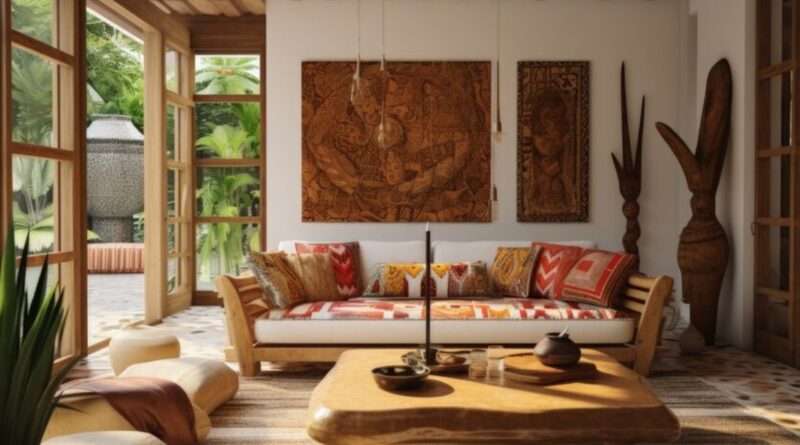Integrating Cultural Design Elements in Modern Interiors
In the world of interior design, the blending of diverse cultural elements has become a hallmark of contemporary aesthetics. This fusion not only enriches the visual appeal of spaces but also imbues them with deeper meanings and stories. For interior designers, integrating cultural elements is a powerful way to create unique, personalized, and engaging environments. This article explores how interior designers incorporate cultural design elements into modern interiors, enhancing both beauty and functionality.
The Growing Trend of Cultural Fusion
In recent years, the trend of incorporating cultural design elements into modern interiors has gained significant traction. This movement is driven by a growing appreciation for diversity, sustainability, and the desire to create spaces that tell a story. Interior designers in Chennai are increasingly looking beyond traditional Western styles to embrace influences from around the world, including African, Asian, Latin American, and Middle Eastern designs.
Embracing Global Influences
- Patterns and Textiles: One of the most visible ways interior designers incorporate cultural elements is through patterns and textiles. From the intricate geometric patterns of Moroccan rugs to the vibrant ikat fabrics of Southeast Asia, textiles are a rich source of cultural expression. These fabrics can be used in upholstery, curtains, cushions, and throws, adding texture, color, and cultural depth to a space.
- Furniture and Art: Furniture pieces often reflect cultural heritage and craftsmanship. For instance, the use of Mid-Century Modern furniture with its clean lines and functional design has become popular globally. Similarly, the incorporation of handcrafted wooden furniture from India or the use of woven baskets and pottery from African cultures can bring a sense of authenticity and craftsmanship to modern interiors.
- Color Schemes: Different cultures have unique color palettes that can inspire interior designers. The bold, rich colors of Indian interiors, the serene blues and whites of Mediterranean design, or the earthy tones found in African décor can all be harmoniously integrated into contemporary spaces. Interior designers often use these color schemes to create focal points or to evoke specific moods and atmospheres.
Case Studies: Successful Cultural Integration
To illustrate how interior designers effectively incorporate cultural elements, let’s look at some inspiring examples:
- African-Inspired Living Room: In a recent project, an interior designer blended African tribal prints with modern Scandinavian furniture. The use of vibrant kente cloth throws, woven baskets, and sculptures created a striking contrast with the minimalist Scandinavian pieces. This blend of styles not only highlighted the beauty of African craftsmanship but also created a warm, inviting space.
- Asian Zen Retreat: Another example is the creation of a Zen-inspired retreat that draws from Japanese and Chinese design principles. The use of shoji screens, bamboo furniture, and minimalist décor, combined with elements like bonsai trees and Japanese rock gardens, helped to create a serene and balanced atmosphere. Interior designers carefully selected each element to ensure that the space remained true to its cultural roots while feeling contemporary and inviting.
- Mexican Fusion Dining Room: In a Mexican-inspired dining room, an interior designer combined traditional Talavera pottery with modern, sleek furniture. The vibrant blue and yellow tiles, along with hand-painted ceramics, brought a burst of color and personality to the space. This fusion of traditional and modern elements not only honored Mexican heritage but also created a lively and dynamic dining experience.
The Role of Interior Designers in Cultural Integration
Interior designers play a crucial role in the successful integration of cultural elements into modern interiors. Their expertise in balancing aesthetics with functionality allows them to seamlessly blend diverse styles and traditions. Here’s how interior designers can enhance the cultural richness of a space:
- Research and Education: A deep understanding of different cultures is essential. Interior designers often engage in research and travel to gain firsthand experience and knowledge of various design traditions. This research helps them to accurately and respectfully incorporate cultural elements into their designs.
- Collaboration with Artisans: Working directly with artisans from different cultures can ensure the authenticity and quality of the design elements. Interior designers often collaborate with local craftsmen and women, promoting traditional techniques and ensuring that the cultural integrity of the elements is maintained.
- Personalization and Storytelling: Great interior designers understand the power of storytelling. By selecting elements that have personal or cultural significance, they can create spaces that reflect the individuality and heritage of their clients. This personalization makes the interiors not only beautiful but also meaningful.
Challenges and Considerations
While the incorporation of cultural elements can greatly enhance a space, it also comes with challenges. Interior designers must navigate issues such as cultural appropriation, ensuring that the elements are used respectfully and ethically. It’s important to avoid superficial or stereotypical representations and instead focus on genuine appreciation and understanding of the culture.
Conclusion
The influence of cultural design elements in modern interiors is a testament to the beauty and richness of global diversity. For best interior designers in Chennai, the challenge and joy lie in weaving these elements into cohesive, stylish, and meaningful spaces. By embracing and celebrating cultural diversity, interior designers not only enhance the aesthetic appeal of interiors but also foster a greater understanding and appreciation of the world’s rich cultural tapestry. As we move forward, the collaboration between tradition and modernity promises to create interiors that are not just beautiful, but also deeply enriching and inspiring.

